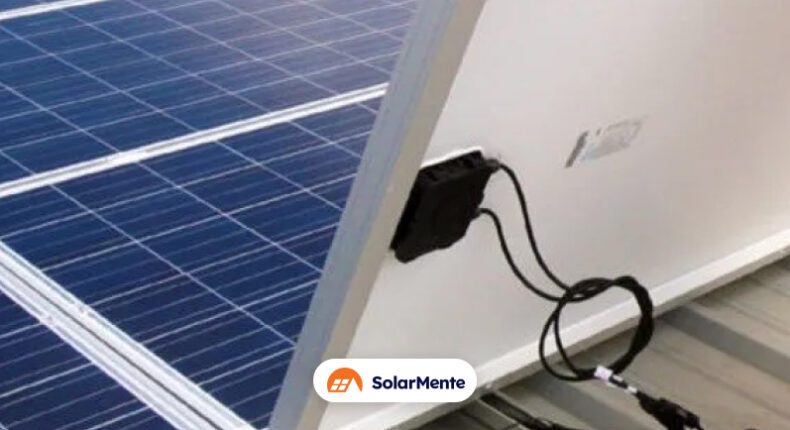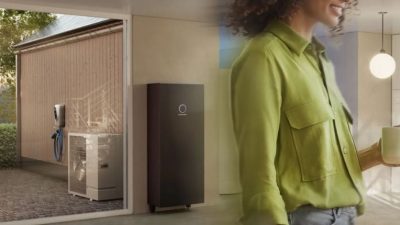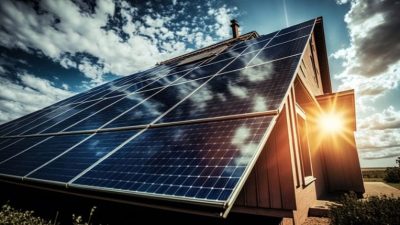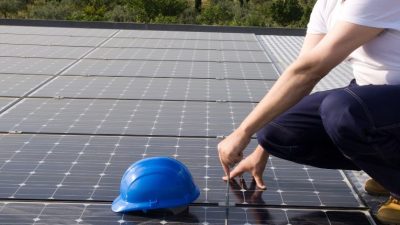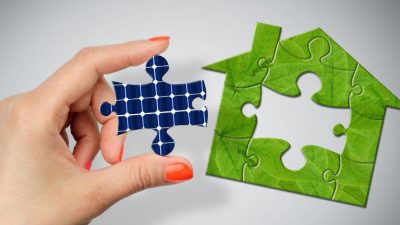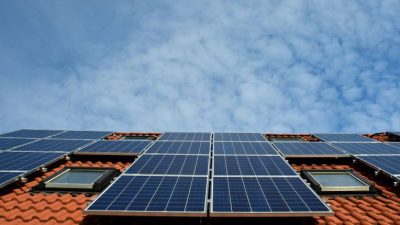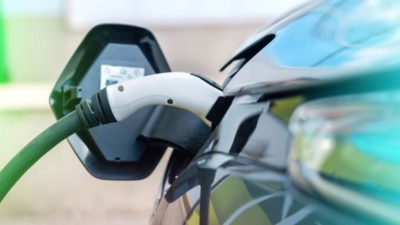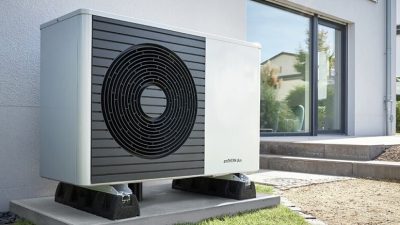Are you lurking in the shadows or do you need a self-consumption system in different orientations due to the conditions in your home?
To optimise the performance of your photovoltaic panels and prevent production from decreasing, solar panel optimisers are a smart alternative to microinverters.
They are cheaper to install, although both solve the same shading and orientation problems.
Having a complicated roof does not have to be an obstacle.
That is why we are going to explain in this article what power optimisers are and how they work.
In addition, we will tell you what the advantages and disadvantages are so that you can make a decision with all the facts on the table.
Let’s get down to it.
What is an optimiser for solar panels?
Power optimisers are elements designed to avoid energy losses caused by shadows or obstacles that limit the arrival of the sun’s rays to our solar panel installation.
And for this reason, their objective is to maximise the performance of the modules and increase efficiency.
But the peculiarity of these devices is that they combine the best features of string inverters and microinverters.
Here’s why.
Optimisers, like microinverters, are installed on each solar module, but they do not transform the energy from each panel, but send it to a central inverter as string devices do.
Therefore, optimisers for solar panels:
-
They are placed per panel and work independently.
-
They maximise and optimise the power per PV panel before sending it to the central inverter.
This means that, in the event that a module is affected by shading, it does not affect the rest of the panels and is not drastically reduced thanks to the optimiser.
In short, they are more efficient than string inverters, locating the point of the installation where the most power is generated.
Advantages of solar panel optimisers
They have similar advantages to microinverters.
But let’s explain what they are.
High efficiency
Unlike string models, the optimisers act independently when installed on each panel, which guarantees the maximum performance of the installation.
Let us tell you in more detail.
In conventional inverters, the output of each series of solar panels is adjusted to the module that generates the least yield in a certain period of time, whether this is caused by shadows, dirt, dust, etc.
This example will help you to see this better.
Imagine you go out for a run with your friends and one of them has a slower pace than the others, so you have to reduce your pace to run together.
This is what would happen with a traditional inverter.
However, systems with optimisers or microinverters work individually so that the performance of a single panel does not harm the others.
They are also more efficient in partial shade conditions.
So says SolarEdge. The company claims that up to 25% more power can be obtained by installing solar optimisers.
So if you are continuously shaded, these devices may be a good option for you.
Eliminates the missmatch effect
It also reduces the problem of the missmatch effect.
This phenomenon is common on uneven surfaces, where solar panels cannot be installed in the same direction.
But thanks to the optimisers, this problem is reduced or eliminated as each panel works independently.
You are not limited to orienting the modules in a particular way.
Note: the missmatch effect translates as “mismatch”, i.e. when the limitations of the roof do not allow the solar panels to be positioned at the right inclination and orientation.
Individual monitoring
Since the optimisers for solar panels work independently, monitoring is done for each module.
What advantages does this offer?
Knowing in real time the production of each photovoltaic panel and identifying possible faults when it is not working as it should. This avoids a generalised replacement of the installation.
This intelligent tool will make it easy for you to detect problems. In this case, notify your installer as soon as possible to change the device and return to its maximum performance.
Safety shutdown
Here there is a clear difference compared to string inverters.
Conventional devices switch off automatically in emergency situations.
But there is a catch.
The panels continue to operate and generate current that can cause incidents.
Power optimisers, on the other hand, reduce the DC voltage to a minimum (usually one volt or less).
Translation?
The risk of accidents is reduced and, in the event of a repair on the roof, the installers are not in danger.
And what are the disadvantages?
It is true that optimisers have hardly any disadvantages because they are designed to improve the efficiency of solar modules and offer more cost-effectiveness.
But like any product, there are a number of disadvantages.
Limited selection of inverters
You cannot find a wide selection of optimisers on the market because they are a recent product.
However, this solar technology is rapidly gaining popularity at both the residential and business level.
Cost
Power optimisers are installed on each module and therefore the price is higher compared to a conventional string inverter system.
However, the cost is lower than that of microinverters.
Along the same lines, the system would be more economical and maintenance would be less costly since microinverters have a more complex installation and require more wiring for their operation.
How much does a power optimiser cost?
The price of a power optimiser is usually around 70 euros. It depends on the manufacturer, size, type, etc.
Although they are more expensive than traditional inverters, they have a clear advantage in the efficiency of the panels and, therefore, the payback period is reduced and the lifetime of the modules is increased.
Beyond this, it is important to contact different solar panel installers.
Compare quotes and explore your options before making a hasty decision.
What is the difference between power optimisers for solar panels and microinverters?
The truth is that there are similarities between the two devices, but the significant difference between them is in the conversion process.
While microinverters perform the conversion from direct current to alternating current in the modules themselves, optimisers carry out the procedure in a single inverter, which means that the losses are somewhat lower.
In reality, they optimise the energy to the maximum and the microinverters convert the electricity in the module itself, without the need to transfer it to a central inverter for conversion and domestic use.
In terms of cost, we see a lower cost for the optimisers, but it would be necessary to assess the case of each roof and check whether, in the long term, the use of microinverters offers a higher return.
On the other hand, scalability is the advantage of microinverters. They have no power limitation and the installation can be expanded if our energy needs change. In short, they are more versatile.
And finally, if we want to install solar batteries, microinverters have more limited options. They need an additional device that avoids the direct transformation of electricity in the panels themselves and, consequently, energy losses occur.
In any case, both systems are efficient, but it is important to assess the needs of each person and the surface area of the roof in order to make an installation that produces the maximum energy possible.
Who are solar panel optimisers recommended for?
If you have come this far and still have doubts about whether you need power optimisers for your future photovoltaic installation, then let’s go one step further and point out the factors you need to be aware of:
Here we leave you with the 5 key points:
-
Orientation of the panels and roof. If your home is affected by shadows or other objects that limit the absorption of light by the panels, optimisers can be a good option to extract maximum performance from the system.
-
Optimisation and maintenance of the installation. Shading may not be a problem for your roof, but you may prefer to install such devices to achieve optimal system output because efficiency may drop due to cloudy weather or dirt.
-
System monitoring. If you want to improve the performance of your solar panels, optimisers allow you to know the efficiency of each module and find out where the fault lies.
-
Budget. If you are on a tight budget and the characteristics of your roof do not require these devices, it is better to investigate other options. However, if you have limited funds, make several enquiries and research the manufacturers and models available.
-
Safety. In the case of optimisers, they reduce the voltage to a minimum to avoid accidents and, if the operators have to go up to repair the system, they will not be at risk.
If you would like to do a detailed study of your home with us, you can start here.
Is it worth installing solar panel optimisers?
Solar panel optimisers are a worthwhile investment for both homes and businesses.
The good thing about these devices is that they improve the efficiency of string inverters.
In other words, if there is any deficiency in a module, the performance does not depend only on the affected panel and therefore we will not see a significant drop in energy production.
If you are frequently shadowed, the orientation is unfavourable or a complex installation design is required, it seems to us to be a good option to improve the performance of your system and cover your domestic consumption.
It is therefore essential to know:
-
Your energy needs.
-
The conditions of the roof.
-
Budget you are willing to accept.
In this case, consult with experts in solar energy to assess whether power optimisers are a good option.
If you want to find out which model is right for you, click here for a study of your home.
We look forward to seeing you inside!

